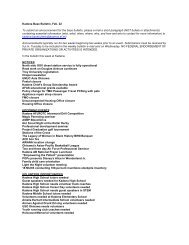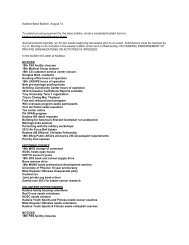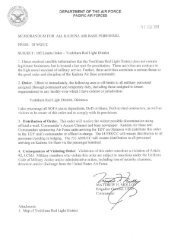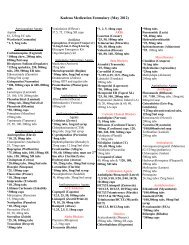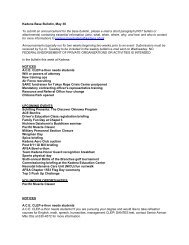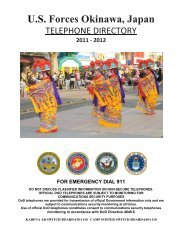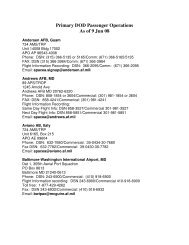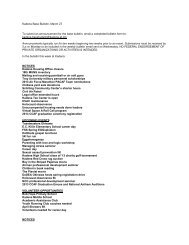JP 3-52, Joint Airspace Control - Defense Technical Information ...
JP 3-52, Joint Airspace Control - Defense Technical Information ...
JP 3-52, Joint Airspace Control - Defense Technical Information ...
You also want an ePaper? Increase the reach of your titles
YUMPU automatically turns print PDFs into web optimized ePapers that Google loves.
<strong>Airspace</strong> <strong>Control</strong> Planning Considerationse. Operation NOBLE EAGLE, the homeland air defense operations launched byNorth American Aerospace <strong>Defense</strong> Command after the attacks of 11 September 2001,and military support operations after Hurricane Katrina demonstrated the need for a clearunderstanding of responsibilities and effective coordination between civil and militaryairspace control agencies during homeland defense or civil support operations. Specificinformation for homeland airspace coordination considerations is included in <strong>JP</strong> 3-28,Civil Support.2. <strong>Airspace</strong> <strong>Control</strong> Risk ConsiderationsRisk is a fundamental consideration of airspace control. <strong>Joint</strong> doctrine recognizesthe need for each Service and functional component to use the airspace with maximumavailability consistent with the JFC acceptable level of risk. The JFC’s acceptable levelof risk for all airspace users (including fires) should be clearly delineated in theACP. During all phases the assumption of risk is a command decision. Definitions ofhigh, moderate, and low risk vary from theater to theater based on the geographiccombatant commander’s guidance. In general terms, high risk prioritizes missionaccomplishment over the preservation of resources; moderate risk seeks to balancemission accomplishment with potential resource losses and may require slight missionadjustments to achieve objectives; and low risk prioritizes the preservation of resourcesand may require substantial mission adjustments to achieve objectives. As the volume ofairspace users increases, control should be enhanced to keep the level of risk acceptableto the JFC. The ACP should specify areas where high volumes of airspace users areprojected and plan for increased control capability. If an enhanced control capability isnot an option, then commanders should understand they are accepting a higher risk ofmidair collisions and fratricide with indirect fires, manned systems, and UA.Commanders may accept different levels of risk based on the systems involved. Forexample, a commander may direct that a higher level of risk be accepted for possiblefratricide between indirect fires and some or all UA than between indirect fires andmanned aircraft.3. Planning for <strong>Joint</strong> <strong>Airspace</strong> <strong>Control</strong>Each operational area has specific operational requirements for airspacecontrol. These requirements must be determined as early as possible and incorporated inthe overall joint force planning effort. Political constraints, national and military airspacemanagement systems, and procedures and their capabilities and limitations are importantconsiderations. ROE, disposition of air defense weapons, fire support plans, andprocedures for identification of US and multinational aircraft are also important items toconsider. Every joint/multinational force is different, and the forces assigned willhave specific operational requirements for airspace. The following broad principlesof planning (see Figure III-2) are essential to effective airspace control:III-3



